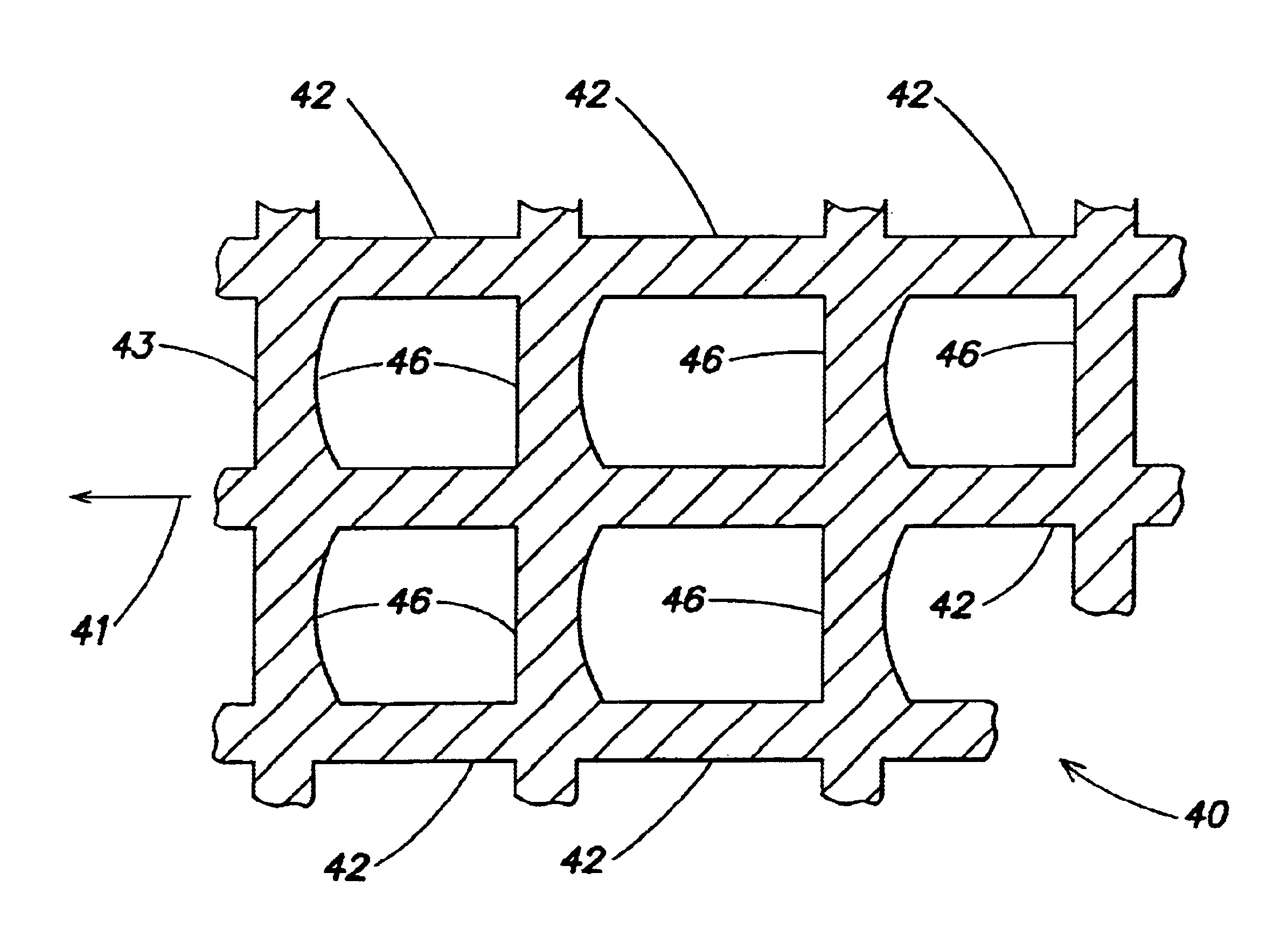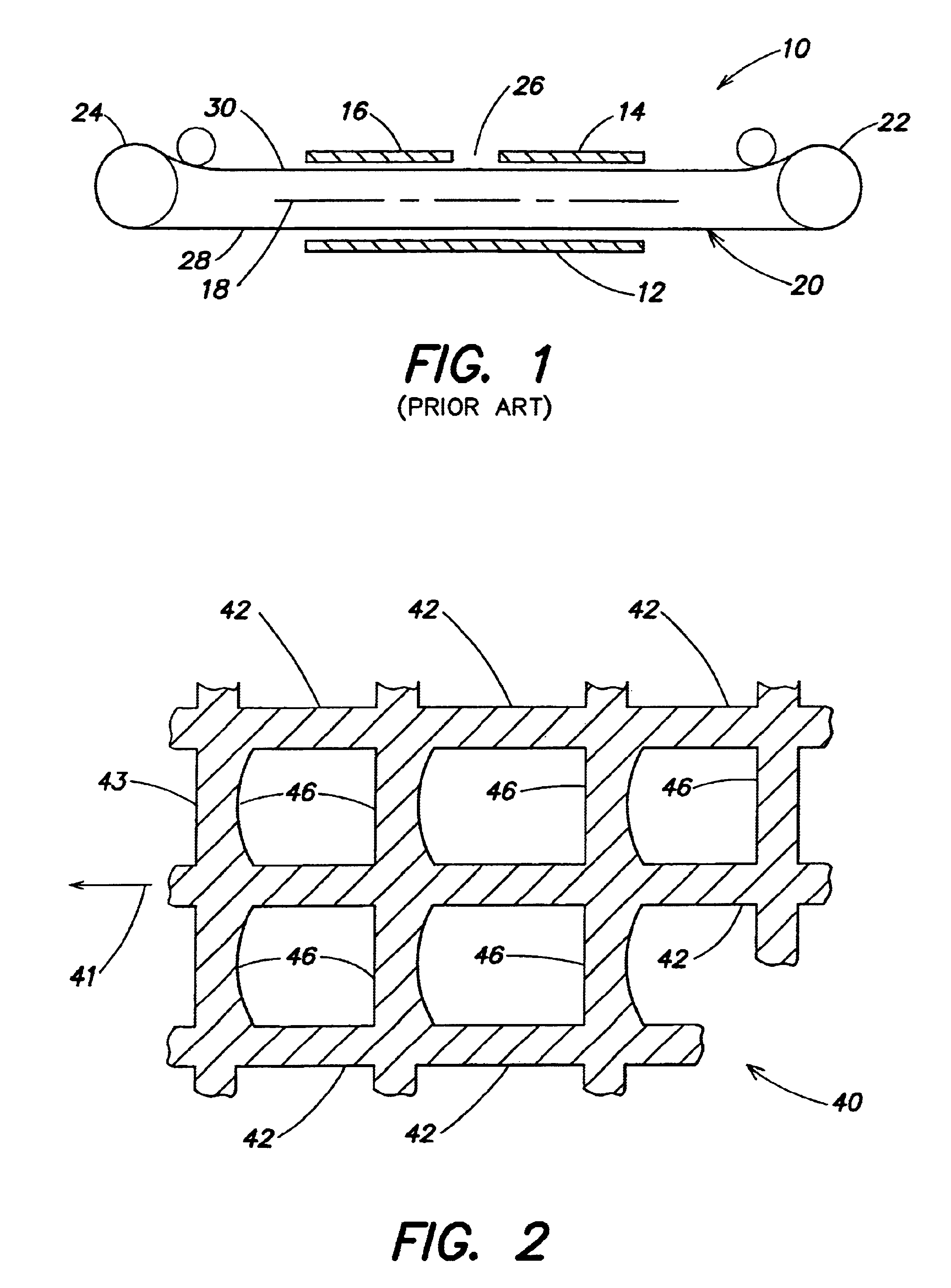Method of forming a continuous belt for a belt-type separator device
- Summary
- Abstract
- Description
- Claims
- Application Information
AI Technical Summary
Benefits of technology
Problems solved by technology
Method used
Image
Examples
Embodiment Construction
[0028]Certain materials, such as thermoplastic materials that contain polymerization products of at least one olefinic monomer, thermoplastics and thermoplastic elastomers are materials that have properties suited to BSS belts. One example of a potentially useful thermoplastic material is nylon, another is ultra high molecular weight polyethylene (UHMWPE). UHMWPE is one example of an excellent material which has properties that make it ideal for BSS belts. It is extremely abrasion resistant, e.g., about an order of magnitude more resistant than the next best material in similar service, it has a low coefficient of friction, is non-toxic, is an excellent dielectric, and is readily available. Unfortunately it cannot be extruded and so belts cannot be manufactured of it using known extrusion techniques.
[0029]UHMWPE melts at 138 degrees Celsius. The melting point is determined optically when the opaque white material becomes completely clear. The viscosity of melted UHMWPE is so high th...
PUM
| Property | Measurement | Unit |
|---|---|---|
| Fraction | aaaaa | aaaaa |
| Fraction | aaaaa | aaaaa |
| Angle | aaaaa | aaaaa |
Abstract
Description
Claims
Application Information
 Login to View More
Login to View More - R&D
- Intellectual Property
- Life Sciences
- Materials
- Tech Scout
- Unparalleled Data Quality
- Higher Quality Content
- 60% Fewer Hallucinations
Browse by: Latest US Patents, China's latest patents, Technical Efficacy Thesaurus, Application Domain, Technology Topic, Popular Technical Reports.
© 2025 PatSnap. All rights reserved.Legal|Privacy policy|Modern Slavery Act Transparency Statement|Sitemap|About US| Contact US: help@patsnap.com



